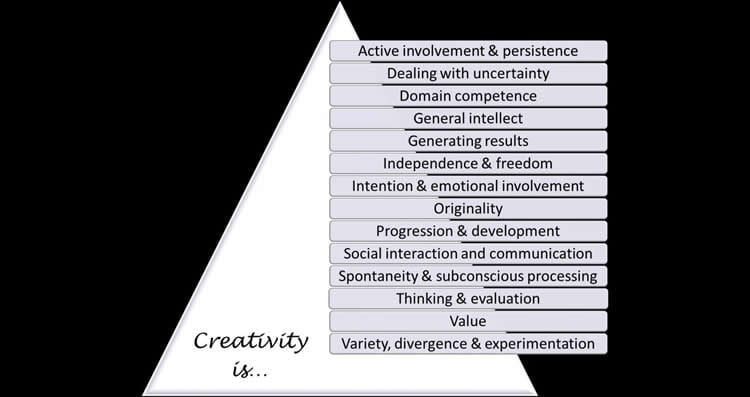Summary: A computer system has identified the complex components of creativity, a new study reports.
Source: University of Kent.
The elusive and complex components of creativity have been identified by computer experts at the University of Kent.
Dr Anna Jordanous, lecturer in the School of Computing, worked with language expert Dr Bill Keller (University of Sussex) on how to define the language people use when talking about creativity, known in the field as computational creativity. With that knowledge it becomes possible to make computer programs use this language too.
Dr Jordanous and Dr Keller looked at what people say when they talk about “what is creativity” in academic discussions, from various disciplines – psychology, arts, business, and computational creativity.
In an article entitled Modelling Creativity: Identifying key components through a corpus-based approach, published by PLOS ONE, they describe a unique approach to developing a suitable model of how creative behaviour emerges that is based on the words people use to describe it. Computational creativity is a relatively new field of research into computer systems that exhibit creative behaviours.
Using language-analysis software they identified the creative words and grouped them into clusters. These are considered to be 14 components of creativity. These clusters have been used to evaluate the creativity of computational systems, and are expected to be a useful resource for other researchers in computational creativity, as well as forming a basis for the automated evaluation of creative systems.

Source: Sandy Fleming – University of Kent
Image Source: This NeuroscienceNews.com image is credited to Anna Jordanous.
Video Source: The video is credited to University of Kent.
Original Research: Full open access research for “Modelling Creativity: Identifying Key Components through a Corpus-Based Approach” by Anna Jordanous and Bill Keller in Trends in Molecular Medicine. Published online October 5 2016 doi:10.1371/journal.pone.0162959
[cbtabs][cbtab title=”MLA”]University of Kent. “Computer Experts Identify 14 Themes of Creativity.” NeuroscienceNews. NeuroscienceNews, 6 October 2016.
<https://neurosciencenews.com/creativity-psychology-themes-5216/>.[/cbtab][cbtab title=”APA”]University of Kent. (2016, October 6). Computer Experts Identify 14 Themes of Creativity. NeuroscienceNews. Retrieved October 6, 2016 from https://neurosciencenews.com/creativity-psychology-themes-5216/[/cbtab][cbtab title=”Chicago”]University of Kent. “Computer Experts Identify 14 Themes of Creativity.” https://neurosciencenews.com/creativity-psychology-themes-5216/ (accessed October 6, 2016).[/cbtab][/cbtabs]
Abstract
Modelling Creativity: Identifying Key Components through a Corpus-Based Approach
Creativity is a complex, multi-faceted concept encompassing a variety of related aspects, abilities, properties and behaviours. If we wish to study creativity scientifically, then a tractable and well-articulated model of creativity is required. Such a model would be of great value to researchers investigating the nature of creativity and in particular, those concerned with the evaluation of creative practice. This paper describes a unique approach to developing a suitable model of how creative behaviour emerges that is based on the words people use to describe the concept. Using techniques from the field of statistical natural language processing, we identify a collection of fourteen key components of creativity through an analysis of a corpus of academic papers on the topic. Words are identified which appear significantly often in connection with discussions of the concept. Using a measure of lexical similarity to help cluster these words, a number of distinct themes emerge, which collectively contribute to a comprehensive and multi-perspective model of creativity. The components provide an ontology of creativity: a set of building blocks which can be used to model creative practice in a variety of domains. The components have been employed in two case studies to evaluate the creativity of computational systems and have proven useful in articulating achievements of this work and directions for further research.
“Modelling Creativity: Identifying Key Components through a Corpus-Based Approach” by Anna Jordanous and Bill Keller in Trends in Molecular Medicine. Published online October 5 2016 doi:10.1371/journal.pone.0162959






